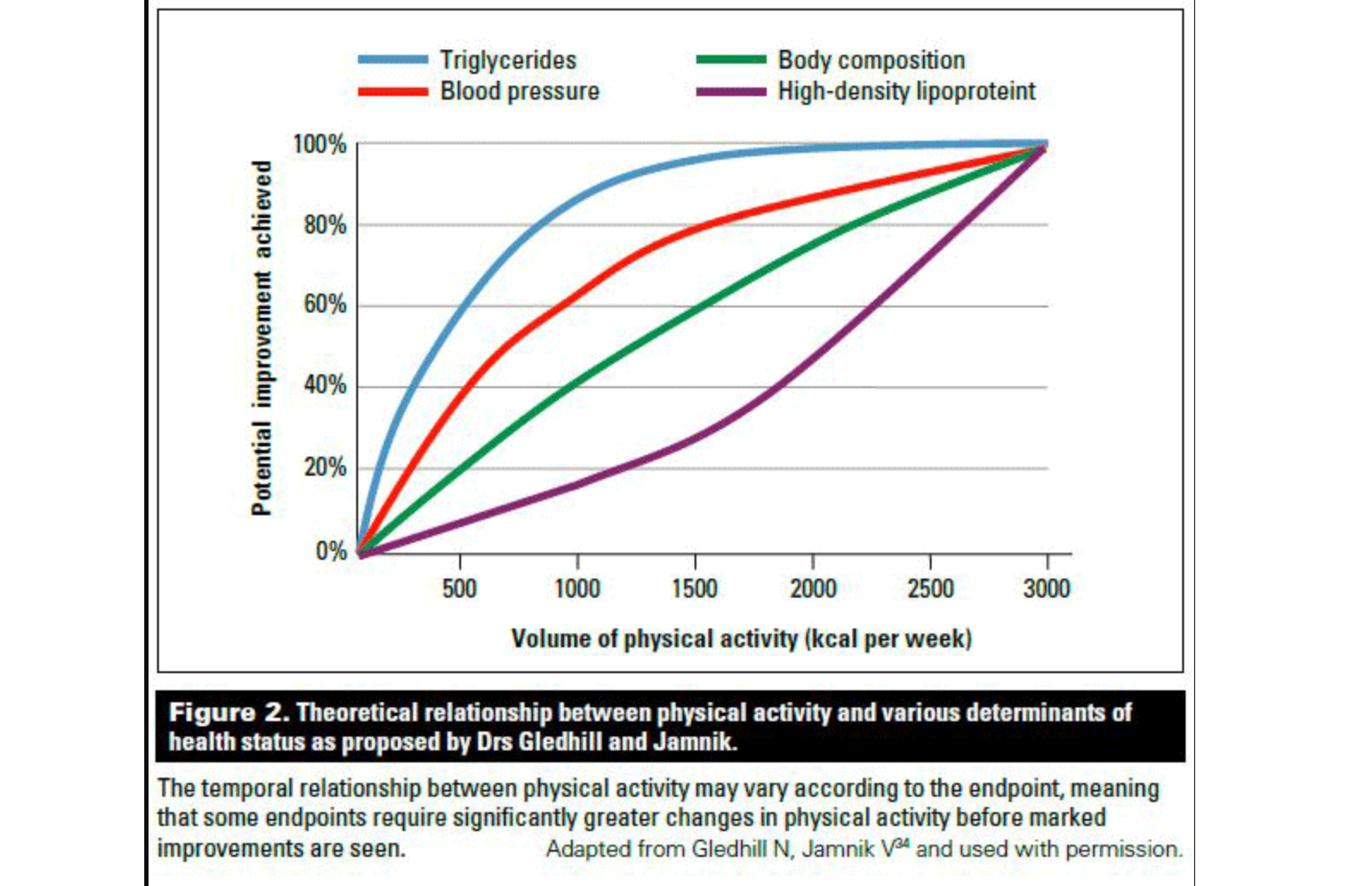The most frequent questions we get about low-intensity training aren't generally about the benefits. They are about the mechanics, i.e., the gear and the protocols. People want to know: What gear do I need, what workouts should I do, and how do I combine gear and workouts to do this?
In this article, we go into all of that in detail—in a simple way. You don't need to think so hard: Just get on with things. Get your heart rate up regularly, at least to the point where you can't speak in pages, and the benefits will come.
While still keeping things simple, you can and arguably should take things further. A lot further. There is a dose-response relationship between aerobic fitness and health benefits, so the more you do, the greater the benefits. Granted, you can get 80% of the benefits at around 150 minutes a week, with a judicious amount of high-intensity work. That doesn't mean you should stop there, however.
How Much and How Often
You need to provide your body with an aerobic dose regularly to elicit the desired response. That is what we mean by "training", a word that sometimes scares people off. "I'm not preparing for a race," they'll protest, "so why am I training?" You're training for life, we tell them, and that is the greatest race there is.

So, how often do you need to train? At least three to four times per week, if you want to give your body time to adapt to the load and respond to it. So, if you're targeting the minimum, around 150 minutes, then that's four 40-minute runs/rides per week at low intensity.
Most people go wrong in various ways here. First, they are not consistent: they do a few efforts this week, none next, too many the week following, and so on. Second, they target a race or event, complete it, and then stop exercising for a month, and the whole process starts over. Third, they become impatient with low intensity, especially if they're doing the minimum minutes, and make their easy efforts too hard.
There are many, many provisos, in that you need to see how you respond to these programs, see how your various thresholds are changing, and see how you feel. All of this is made easier if you do it within a structured training program, a topic about which we will write more in the upcoming weeks as we launch some related services, or you can contact us for more information.
Good Inflammation and Bad Inflammation
Exercise works because it stresses the body, as we have written here many times. Too little physiological stress and the body takes it in stride, literally, and doesn't adapt; too much stress and the body can become perpetually inflamed, causing poorer fitness, and even injury.
The trick? Finding a good balance, one where you provoke adaptations at multiple levels, but don't do so much as to work against yourself, or, worse, end up in an injury/rehab cycle. As we have written many times, getting stuck on that roundabout is among the worst things ever, and it only gets worse with age.
As we often say, people go too hard on their easy days, and too easy on their hard days. This results in exactly the inflammation described above, where the body isn't adapting to load, but also isn't recovering. It's just an endless spiral, often leading to injury.
Types of Training
This brings us back to low-intensity training, like Zone 2. Before we go any further, let's be clear that there are many types of training, all with strengths and weaknesses, and all with bodies of research behind them. We will now go through some of the most useful approaches, and then turn to setting up your various training thresholds.
Read the full article
Sign up now to read the full article and get access to all articles for paying subscribers only.





